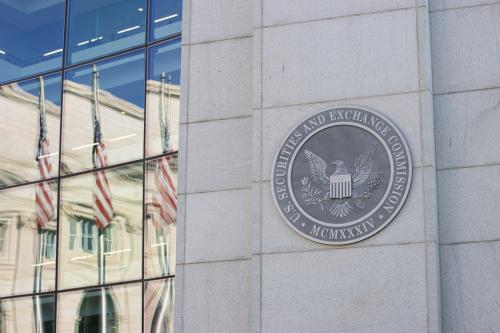This week, the Environmental Protection Agency announced a new rule aimed at cutting CO2 emissions from existing coal power plants by 30 percent by 2030 from their 2005 levels. The rule is the centerpiece of President Obama’s climate action plan, and is a response by his administration to the lack of action on climate change by Congress, which has mired the debate on climate in the U.S. for the past five years. The issue has become highly political, drawing opposition to any type of national action or even discussion from largely conservative groups and the fossil fuel industry. Incremental actions have been taking place at the state level for several years in some parts of the country, but discussions on an economy-wide solution to the climate change challenge has failed to move at the federal level.
The proposed rule is important for several reasons. Domestically, the rule is touted as having important health benefits through the reduction of air pollution levels, as well as for its impact on carbon emissions. The rule will take a large bite out of U.S. emissions by targeting the power sector—the country’s largest source of CO2 emissions at nearly 40 percent. The rule also includes support for energy efficiency and renewable energy, and its flexibility will allow each state to define how they intend to meet the new standards, whether through regulation forcing plant upgrades, switching from coal to natural gas, improving energy efficiency, instituting a cap-and-trade program, or by promoting renewable energy through strong incentives.
Kick-starting International Negotiations
That’s here at home, but one of the main reasons for taking these steps is to kick-start the sluggish international negotiations on climate change. The coming year and a half is crucial to creating the political conditions needed for an ambitious agreement in Paris in 2015, an agreed global deadline for settling emission reduction targets that will come into play after 2020. Several meetings with government officials and negotiators have been planned during this time, including an intersessional negotiating meeting starting in Bonn today and a high-level summit at U.N. headquarters in New York this September. Individual country targets are expected to be announced early next year.
The EPA’s power plant rule is a key piece of the puzzle, in terms of how the U.S. plans to meet its declared target of reducing our emissions 17 percent by 2020 on 2005 levels. The hope is that this concrete action will generate excitement and ambition in other countries (especially China) for setting new post-2020 targets. Qi Ye, director of the Brookings Tsinghua Center, has already suggested that a stringent set of rules will affect the domestic debate in China. The rule can be seen as a symbolic gesture that shows that after years of being a laggard, the U.S. is attempting to show leadership on climate change. The announcement this week has largely been positively received by the international community.
Ambitions and Implementation
The timing is critical, and somewhat difficult. The rule is due to be finalized with state implementation plans in place by 2016, just in time for the end of Obama’s tenure as President and an uncertain future for US climate change action. Experts are already predicting a major battle over this rule in the coming year, as politicians from coal-mining states and lobbyists from the fossil fuel industry and business groups prepare litigation to challenge the rule. However like the Affordable Care Act, these rules will be well on their way to becoming routine before the legal dust settles.
On the other side of the debate, the ambition of the proposal is being called into question—the U.S. has already achieved half of these reductions, mostly through switching to natural gas. The complexity of the rules and flexibility at the state level leaves the issue of implementation an open question: how many states will meet or exceed their targets? How many will fail?
As the latest negotiations crank up today in Bonn, this move by the Obama administration has strengthened the U.S.’s negotiating position toward an international agreement in Paris in 2015. The world will be watching for the response from China, India, and other major greenhouse gas emitters.



Commentary
The International Implications of the New EPA Clean Power Plan Proposed Rule
June 4, 2014